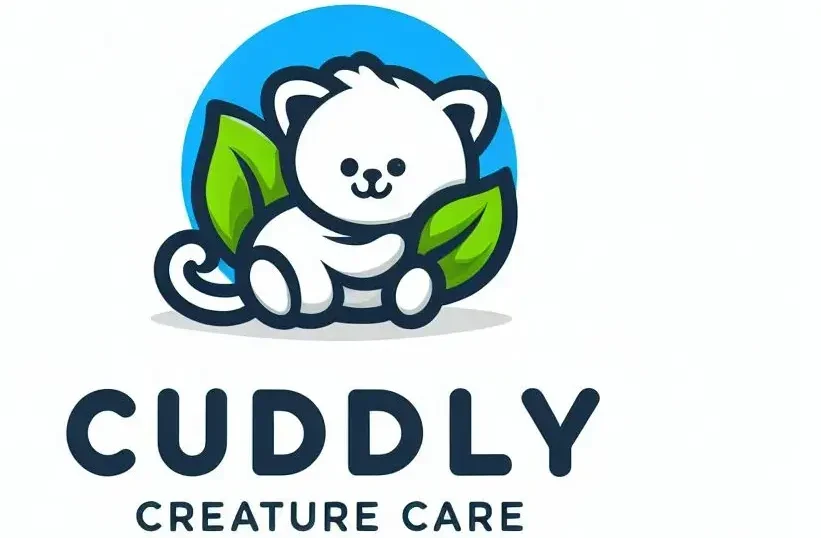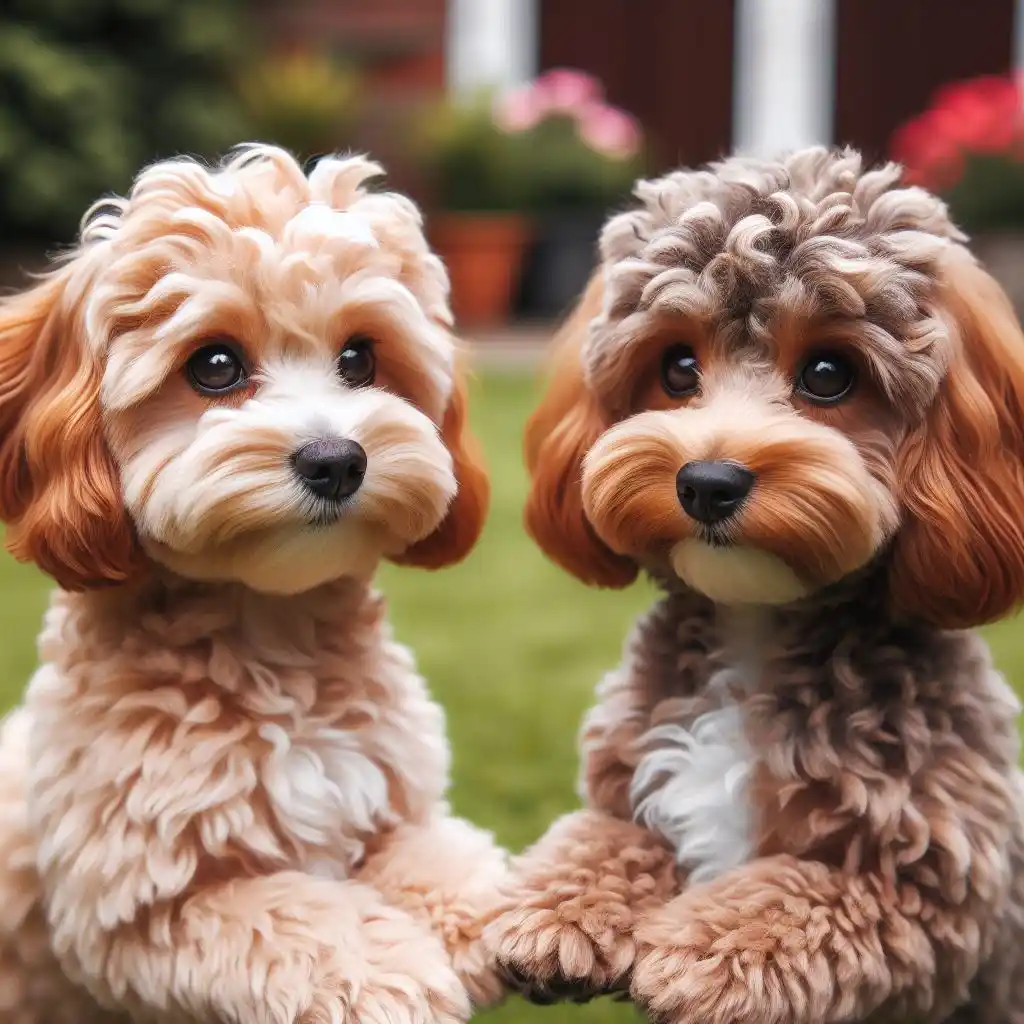Cockapoo vs Cavapoo: A Comparison of Separation Anxiety
For many dog owners, dealing with separation anxiety in their furry companions can be a challenging and heart-wrenching experience. It’s essential to understand the unique needs and characteristics of different dog breeds when it comes to handling alone time.
In this blog post, we will explore the differences between the Cockapoo and Cavapoo breeds when it comes to separation anxiety.
By comparing these two popular poodle mixes, we hope to provide insights and tips to help you support your beloved pet in times of solitude. Let’s dive into the world of Cockapoo vs Cavapoo separation anxiety.
Cockapoo vs Cavapoo In a Nutshell

In the delightful world of poodle mixes, the Cockapoo and Cavapoo shine as two of the most beloved breeds. While they share many charming qualities, their approach to dealing with alone time and separation anxiety reveals subtle yet significant differences. Here’s a simple breakdown to understand them better:
- A blend of the Cocker Spaniel and Poodle.
- Known for their boundless energy and sociable nature.
- Tends to form a deep attachment to their owners, making them more prone to separation anxiety.
- Thrives on interactive play and mental stimulation.
- A cross between the Cavalier King Charles Spaniel and a Poodle.
- Carries a gentler, more adaptable temperament.
- Generally better at managing alone time, thanks to their calm and comforting demeanor.
- Benefits from a cozy environment and reassuring items that remind them of their owners.
Both breeds bring a heart full of love and joy into any home. Understanding their unique characteristics can help you provide the right kind of support and environment to nurture a happy, well-adjusted furry friend.
What is Separation Anxiety in Dogs?

Separation anxiety in dogs manifests as visible distress and a spectrum of behavioral challenges when they find themselves alone. This condition can lead to actions like incessant barking, destroying belongings, and even self-inflicted injuries, showcasing their struggle to cope with solitude.
Recognizing these signs early is critical for pet owners, as it opens the door to seeking solutions that can greatly improve the well-being of their canine companions.
Addressing separation anxiety is more than just managing symptoms; it’s about understanding the emotional needs of your dog and nurturing a secure, trusting relationship with them.
Through patience and empathy, we can help our dogs navigate through their anxieties, ensuring they feel loved and secure, even in our absence.
The Cheerful and Affectionate Cockapoo
The Cockapoo, a lovable mix between a Cocker Spaniel and a Poodle, radiates joy with its bubbly and affectionate personality. These charming dogs quickly become attached to their owners, making them wonderfully loyal companions.
However, their deep bond can sometimes translate to separation anxiety, as they yearn for constant companionship. Navigating this aspect of their nature involves embracing their need for engagement and interactive play.
Keeping a Cockapoo mentally stimulated with puzzles and games, alongside ample cuddle time, can help ease their discomfort during times of solitude.
Their spirited disposition not only makes them a joy to be around but also highlights the importance of understanding and catering to their emotional needs to foster a happy, well-adjusted pet.
The Gentle and Caring Cavapoo
The Cavapoo, a delightful cross between the Cavalier King Charles Spaniel and a Poodle, embodies a gentle and nurturing spirit. This breed’s tender nature makes it an ideal companion for those seeking a less anxious presence in their home.
While Cavapoos cherish time with their families, their adaptable temperament means they typically manage alone time with more ease than Cockapoos. It’s important for Cavapoo owners to nurture this adaptability by fostering a sense of security and love, even when they’re not physically present.
Engaging in activities that promote calmness and comfort, such as providing a cozy space or leaving behind a piece of clothing with the owner’s scent, can help a Cavapoo feel more at ease during periods of separation.
Encouraging independence through gentle reassurance and positive reinforcement can also empower this affectionate breed to embrace moments of solitude with confidence.
Strategies to Support Your Cockapoo or Cavapoo
Caring for a dog with separation anxiety requires a blend of compassion, consistency, and creativity. To support your Cockapoo or Cavapoo, consider incorporating interactive toys that challenge their minds and dispel boredom during your absence.
Establishing a ‘goodbye routine’ can signal to your pet that you will return, thereby reducing their stress. This might include a specific phrase you say or a calming treat you give them before leaving.
Additionally, background noise like a radio or TV can provide a comforting auditory presence, making them feel less isolated. For pets needing extra reassurance, leaving an item that smells like you can be a powerful tool in comforting them.
Remember, every dog is unique, and finding the right combination of strategies might require some experimentation and patience. Your efforts to understand and mitigate their anxiety speak volumes of your love and commitment to their well-being.
The Role of Grooming and Routine in Alleviating Anxiety
Grooming and maintaining a consistent daily routine are fundamental in soothing the nerves of both Cockapoos and Cavapoos. These activities go beyond mere physical care; they are moments of profound connection and reassurance for your pet.
Regular grooming sessions, where you gently brush their coat, trim their nails, and ensure they are clean, are opportunities for building trust and conveying a sense of safety to your anxious dog. Similarly, a predictable routine offers a comforting structure.
Knowing what to expect from their day helps alleviate the stress and uncertainty that can trigger anxiety. Whether it’s feeding times, walks, play sessions, or quiet moments together, these predictable patterns can significantly ease your dog’s worries.
Engaging in these practices with love and regularity can transform them into powerful tools against anxiety, fostering a serene environment for your beloved Cockapoo or Cavapoo.
Tips for Helping Your Pooch Adjust
Introducing a new family member, like a Cockapoo or Cavapoo, into your home requires time, patience, and understanding. Begin by gradually acclimatizing them to being alone for short periods, slowly extending the time as they become more comfortable.
Providing them with comfort items, such as a favorite toy or a blanket that smells like you, can offer reassurance and a sense of your presence. Consider the benefits of crate training, presenting it as a cozy, safe haven rather than a place of isolation.
This space can become their retreat, where they feel secure even when you’re not around. It’s essential to approach this adjustment period with empathy, recognizing that every dog’s pace of adapting will vary.
Gentle encouragement and positive reinforcement throughout this time will reinforce their confidence and ease their transition into their new surroundings, making the experience less stressful for both you and your pet.
Socialization and Training for Reducing Separation Anxiety
Effective socialization and thoughtful training play pivotal roles in helping both Cockapoos and Cavapoos manage their feelings of separation anxiety. Introducing your pet to a variety of settings, individuals, and fellow animals early in their lives can significantly bolster their self-assurance and sense of security.
This foundational confidence aids them in feeling more comfortable and less anxious when faced with solitude. Moreover, employing positive reinforcement training strategies not only strengthens your bond with your furry friend but also instills in them a calm demeanor and responsiveness.
Such techniques encourage them to associate your departure with positive outcomes, gradually diminishing the stress they experience in your absence. Engaging in these practices fosters a well-rounded and resilient pet, ready to face times of separation with ease and grace.
Common Triggers of Separation Anxiety in Poodle Mixes
Identifying what sparks separation anxiety in poodle mixes like Cockapoos and Cavapoos is pivotal in fostering a serene environment for them. Sudden shifts in daily routines can unsettle these sensitive souls, making them prone to anxiety.
Experiences such as relocating to a new home, variations in the time spent alone, or even changes in the household dynamic can act as catalysts. Additionally, exposure to loud or unfamiliar sounds may heighten their distress, leaving them feeling more vulnerable during times of solitude.
By being aware of these triggers, we can preemptively address and soothe their concerns, crafting a nurturing space that helps them feel secure and loved, regardless of the circumstances.
Recognizing these potential stressors empowers us to create a comforting and stable environment for our cherished companions, ensuring their well-being remains a top priority.
Lifestyle Considerations for Choosing the Right Poodle Mix Breed
When pondering whether a Cockapoo or Cavapoo best aligns with your life, reflecting on your daily routine and capacity for companionship is crucial.
If your home often buzzes with quiet activity and you can afford regular, engaging interactions, a Cockapoo might seamlessly fit into your world, bringing its boundless energy and need for connection.
Conversely, for those who juggle demanding schedules or seek a gentle companion with a knack for self-comfort, a Cavapoo’s adaptable nature might prove to be a harmonious match.
Each breed brings a unique blend of joy and companionship, yet their needs for emotional support and stimulation vary. Understanding these nuances will guide you towards a choice that not only fills your home with love but also ensures your furry friend thrives in an environment tailored to their disposition.
Choosing the Right Breed for Your Lifestyle
Navigating the decision between a Cockapoo and Cavapoo ultimately reflects your personal rhythm of life and what you seek in a furry companion. These breeds, both brimming with love and joy, cater to different aspects of companionship and solitude.
If your heart leans towards the vibrant energy and constant affection a Cockapoo radiates, ensuring your lifestyle can embrace their companionship needs is essential.
On the flip side, if a Cavapoo’s serene adaptability and gentler approach to alone time speak to your soul, then their calm presence might seamlessly complement your daily life.
It’s about matching your routine, your capacity for engaging with your pet, and understanding the nuances of their emotional well-being.
The journey to choose between these cherished breeds is a heartfelt one, aiming to create a harmonious living space that fosters a profound bond and nurtures the spirit of your chosen companion.
FAQs
- Do Cockapoos and Cavapoos need special grooming?
- Yes, both breeds have coats that require regular grooming to prevent mats and keep them looking their best. Regular brushing and professional grooming every few months are recommended.
- Can Cockapoos and Cavapoos live in apartments?
- Absolutely! Both breeds can adapt well to apartment living as long as they receive enough exercise and mental stimulation. They thrive on companionship and being part of the family.
- How much exercise do they need?
- While individual needs may vary, a good rule of thumb is at least 30 minutes to an hour of exercise daily. This can include walks, playtime, or training sessions.
- Are they good with children and other pets?
- Generally, yes. Both breeds are known for their friendly and gentle nature, making them great companions for children and good with other pets. However, early socialization is key to fostering positive interactions.
- What can I do to help my dog with separation anxiety?
- Start by creating a safe and comforting environment with items like their favorite toy or a piece of your clothing. Gradually acclimatize them to being alone, use positive reinforcement, and consider crate training as a cozy retreat.

Hi, I’m Ella Frost, a devoted animal lover working at CuddlyCreatureCare.com. My passion for animals drives me to share my knowledge through comprehensive guides on animal care and rescue. I’m here to help you understand and care for your furry friends better.







